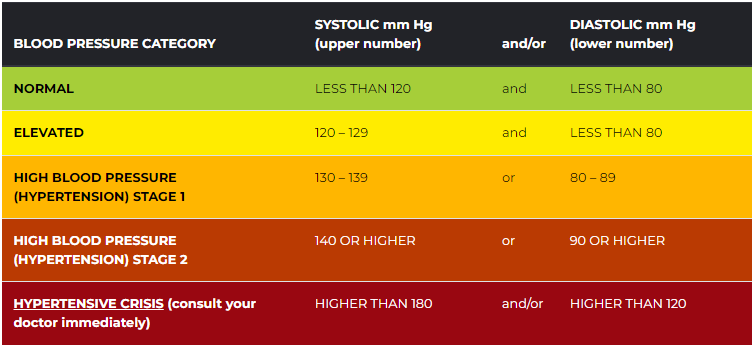High blood pressure, also known as hypertension, is a common medical condition that affects millions of people worldwide. Often referred to as the "silent killer," high blood pressure often goes unnoticed until it causes serious health complications. In this article, we will explore the causes, risk factors, symptoms, and management of high blood pressure.
Understanding High Blood Pressure
Blood pressure is the force exerted by blood against the walls of the arteries as the heart pumps it around the body. It is measured using two numbers: systolic pressure (the top number) and diastolic pressure (the bottom number). A normal blood pressure reading is around 120/80 mmHg.
High blood pressure occurs when the force of blood against the arterial walls is consistently too high. This puts a strain on the heart and blood vessels, potentially leading to various health problems. Over time, untreated high blood pressure can cause damage to vital organs like the heart, kidneys, brain, and eyes.

Stages of High Blood Pressure
The stages provide a guideline for healthcare professionals to assess the severity of the condition and determine appropriate management strategies. The stages of hypertension are as follows:
- Normal Blood Pressure:
- Systolic pressure (top number): Below 120 mmHg
- Diastolic pressure (bottom number): Below 80 mmHg
A blood pressure reading within this range indicates a healthy blood pressure level. However, it is important to maintain a healthy lifestyle to prevent the development of high blood pressure.
- Elevated Blood Pressure:
- Systolic pressure: 120-129 mmHg
- Diastolic pressure: Below 80 mmHg
Elevated blood pressure signifies a higher risk of developing hypertension in the future. It serves as a warning sign for individuals to adopt healthier habits and make lifestyle changes to prevent further progression.
- Stage 1 Hypertension:
- Systolic pressure: 130-139 mmHg
- Diastolic pressure: 80-89 mmHg
Stage 1 hypertension indicates the initial phase of high blood pressure. At this stage, the blood pressure levels are consistently above the normal range. Healthcare professionals may recommend lifestyle modifications, such as dietary changes, exercise, and stress management, to help control blood pressure. In some cases, medication may be prescribed if lifestyle changes alone are insufficient.
- Stage 2 Hypertension:
- Systolic pressure: 140 mmHg or higher
- Diastolic pressure: 90 mmHg or higher
Stage 2 hypertension reflects more severe and uncontrolled high blood pressure. At this stage, healthcare professionals are likely to recommend a combination of lifestyle changes and medication to effectively manage blood pressure. Regular monitoring and follow-ups become crucial to prevent complications and organ damage.
- Hypertensive Crisis:
- Systolic pressure: 180 mmHg or higher
- Diastolic pressure: 120 mmHg or higher
A hypertensive crisis is a severe condition that requires immediate medical attention. At this stage, there is an urgent need to bring blood pressure under control to avoid life-threatening complications such as heart attacks, strokes, or organ failure. Emergency medical care and hospitalization are often necessary to stabilize blood pressure using intravenous medications.
Causes and Risk Factors
The exact causes of high blood pressure are often unknown, but several factors can contribute to its development. These include:
Lifestyle Choices: Unhealthy lifestyle habits such as a sedentary lifestyle, poor diet (high in sodium and low in potassium), excessive alcohol consumption, smoking, and chronic stress can contribute to high blood pressure.
Family History: A family history of hypertension increases the risk of developing the condition. Genetic factors can influence how the body regulates blood pressure.
Age: Blood pressure tends to rise with age. The risk of developing high blood pressure increases significantly after the age of 40.
Obesity: Being overweight or obese places extra strain on the heart, increasing the likelihood of developing high blood pressure.
Chronic Conditions: Certain medical conditions like diabetes, kidney disease, sleep apnea, and hormonal disorders can contribute to high blood pressure.
Symptoms and Complications
High blood pressure is often asymptomatic, which is why it's crucial to have regular blood pressure checks. However, some individuals may experience symptoms such as headaches, shortness of breath, dizziness, chest pain, and vision problems. These symptoms, when present, often indicate severely high blood pressure and require immediate medical attention.
The long-term complications of untreated high blood pressure can be severe. They include:
Heart Disease: High blood pressure is a leading cause of heart attacks, heart failure, and other cardiovascular diseases.
Stroke: Increased pressure within the arteries can lead to the formation of blood clots, which may block blood flow to the brain, causing a stroke.
Kidney Damage: Persistent high blood pressure can damage the blood vessels in the kidneys, leading to kidney failure or chronic kidney disease.
Vision Loss: Hypertension can damage the blood vessels in the eyes, leading to vision impairment or even blindness.
Managing High Blood Pressure
Fortunately, high blood pressure can be effectively managed through a combination of lifestyle changes and, if necessary, medication. Here are some strategies for controlling and reducing blood pressure levels:
Healthy Lifestyle: Adopting a healthy lifestyle can significantly lower blood pressure. This includes regular exercise, a balanced diet rich in fruits, vegetables, and whole grains, limiting sodium intake, avoiding tobacco and excessive alcohol consumption, and managing stress through relaxation techniques.
Medication: In some cases, lifestyle modifications alone may not be sufficient to control blood pressure. In such instances, healthcare professionals may prescribe medications to help regulate blood pressure. It is crucial to take prescribed medications as directed and attend regular check-ups.
Regular Monitoring: Regular blood pressure monitoring is essential, especially for individuals with a family history of high blood pressure or other risk factors. Home blood pressure monitors are widely available and can help individuals keep informed on their Blood pressure numbers.